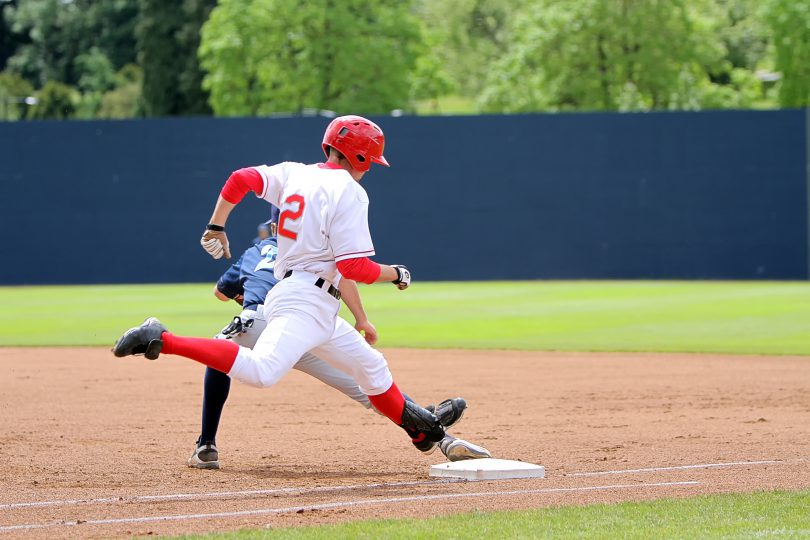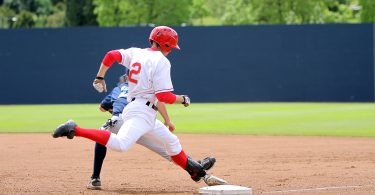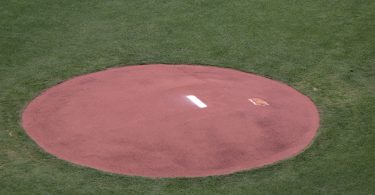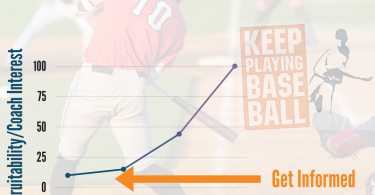In the last segment of our base running series, we addressed the importance of using a uniform base running system. We also discussed base running systems common in college baseball, with special attention to taking signs, assessing the situation, and taking leads. With a standard protocol for each of these important base running actions in place, we now turn our attention to the dirt ball read—a skill that can help win games, but rarely gets the focus and instruction necessary to master. We’ll try to do our part in changing that right now.
If you are taking your secondary lead properly, not only does it put you in a great position to get a good jump on a batted ball or get back if the ball is secured by the catcher, it also puts you in a great position to get an early read on a dirt ball (bounced pitch) and take the extra base. The first step towards taking the extra base on a dirt ball is anticipation. You need to expect the bounced pitch and look for it on every pitch. There are certain counts or situations where it’s more likely that a bounced pitch occurs. Knowing pitcher tendencies (when they like to throw a breaking ball) will help, as will keying off of normal breaking ball counts (0-2, 1-2, 0-1). These counts are the ones where bounced pitches are most likely to occur. If you read the ball in the dirt early and go without hesitation, it makes the play extremely difficult for the catcher, even if he blocks the ball well. Again, knowing the game situation, the arm of the catcher, and your own speed will help dictate how aggressive you can be.
As you move up to each base, you need to be more certain that you can make it to the next base on a dirt ball. When at 2nd and 3rd, you will likely need to see the ball kick away from the catcher to advance. This doesn’t mean that you can’t read it early and get a good jump. You have more time at 2nd base to get back, so you can start to go and stop and then run hard to get back to the base safely. It is easy to justify getting thrown out at 2nd while trying to get into scoring position. On the contrary, getting thrown out at 3rd when you are already in scoring position is much less defensible. Regardless, 90 feet can make the difference in a game and you should always be looking for pitches in the dirt to move up on. If you don’t think it matters, just think about how many runners from third have scored in the MLB Playoffs this year on wild pitches and past balls, and that’s at the game’s highest level of defense! The situation will dictate how aggressive you are, but in all likelihood the extra base is there for the taking.
Remember, players with base running skills are valuable to college coaches. Take the time in practice and scrimmages to work on reading balls in the dirt and getting good jumps. You never know, you just might end up being the game changer your team needs by getting into scoring position at the right time. Get smart on the base paths and get noticed.
To continue honing your base running skills, take the time to read the final two articles of our base running mini-series. Next we look at difficult base running situations you are likely to encounter in your games.







